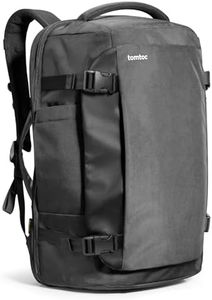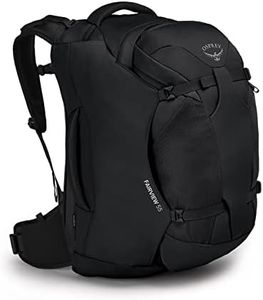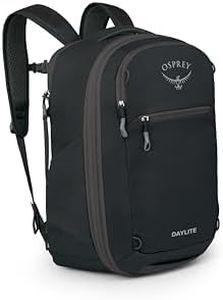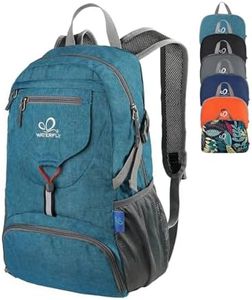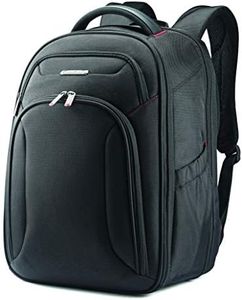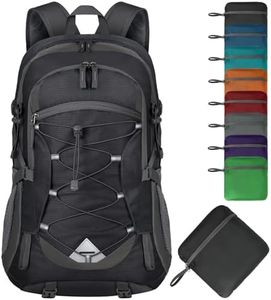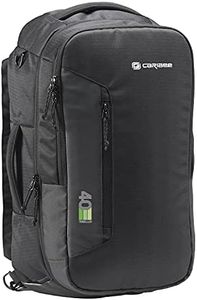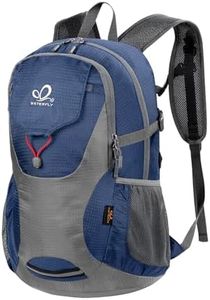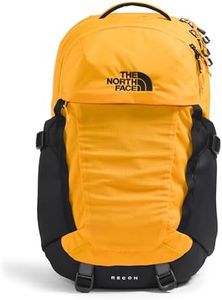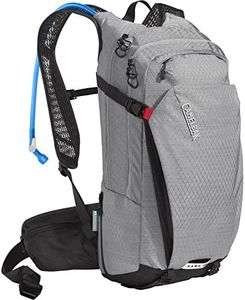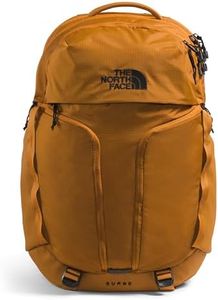We Use CookiesWe use cookies to enhance the security, performance,
functionality and for analytical and promotional activities. By continuing to browse this site you
are agreeing to our privacy policy
10 Best Travel Daypacks
From leading brands and best sellers available on the web.Buying Guide for the Best Travel Daypacks
When choosing a travel daypack, it's important to consider what you'll use it for, how much you'll need to carry, and your comfort preferences. Travel daypacks range from small, minimalist styles for light trips to larger, feature-rich packs for those carrying more gear. Take into account your typical travel activities, whether it's city sightseeing, hiking, or a mix of both, to find a daypack that fits your needs without being too bulky or too limited.Capacity (Liters)Capacity in liters indicates how much a daypack can hold. Small packs under 15 liters are best for essentials like a wallet, phone, and a light jacket, making them ideal for quick trips or urban sightseeing. Medium packs between 15 and 25 liters can handle extra items such as a water bottle, camera, and snacks – great for all-day excursions. Larger packs of 25 liters or more are suitable for those who might carry extra clothing, food, or even small laptops during day hikes or longer outings. Choose based on how much you typically carry; if in doubt, a medium-sized daypack offers good flexibility for most travelers.
WeightThe weight of a daypack affects how comfortable it is to carry for long periods. Lightweight packs are easier on your back and shoulders, especially if you travel all day or in warm climates. However, very light packs may lack padding or features, which can affect comfort and organization. Heavier packs might offer more durability and features, but can be tiring to carry. Your choice should reflect your balance between needing a sturdy, well-organized pack and wanting to keep your load as light as possible.
Material and DurabilityDaypacks are made from materials like nylon, polyester, or canvas, each offering a trade-off between weight and toughness. More durable materials and reinforced stitching mean the pack will stand up to rougher handling, crowded transit, or the occasional rain shower. If you’ll be using the pack for outdoor adventures or expect rough use, opt for thicker, abrasion-resistant fabrics. For casual urban travel, lighter materials may be sufficient and more comfortable to carry.
Comfort and FitThe comfort of a daypack is determined by design elements like padded shoulder straps, a ventilated back panel, and the overall fit on your body. Some daypacks include adjustable chest straps or waist belts for stability, especially useful when walking long distances or carrying heavier loads. Try to assess how the pack sits on your back and check if the straps distribute weight evenly. If you plan to use it extensively, comfort features are worth prioritizing.
Organization and PocketsOrganization refers to the number and type of compartments a daypack has, from main sections to smaller pockets and slots for water bottles, electronics, or travel documents. Packs with many pockets help keep your items organized and easy to access, which is crucial while navigating airports, city streets, or trails. Fewer pockets mean simpler use and lighter weight. Think about what you like to carry and how separated the items need to be for your convenience.
Security FeaturesSecurity features range from lockable zippers and hidden pockets to RFID-blocking compartments. These extras help protect valuables from theft, which can be a concern in busy urban areas or crowded tourist sites. If you’ll travel in high-theft areas, look for features that make it harder for someone to access your pack unnoticed. Otherwise, standard zipper pockets may be enough for low-risk environments.
PackabilitySome daypacks are designed to fold up into their own pocket or a small pouch, letting you pack them into a suitcase or larger bag for easy transport. This feature is especially handy if you want a secondary bag at your destination but don’t need it during transit. If you plan to bring your daypack only occasionally or as an emergency backup, a packable design can save space.
Hydration CompatibilityHydration compatibility means the daypack has a sleeve or pocket for a water bladder and an opening for the hose, letting you sip water on the go without stopping. This is valuable for hikers or anyone who travels in hot climates and needs to stay hydrated. If you’re mainly strolling around cities or places with easy access to water, this feature may not be needed.
